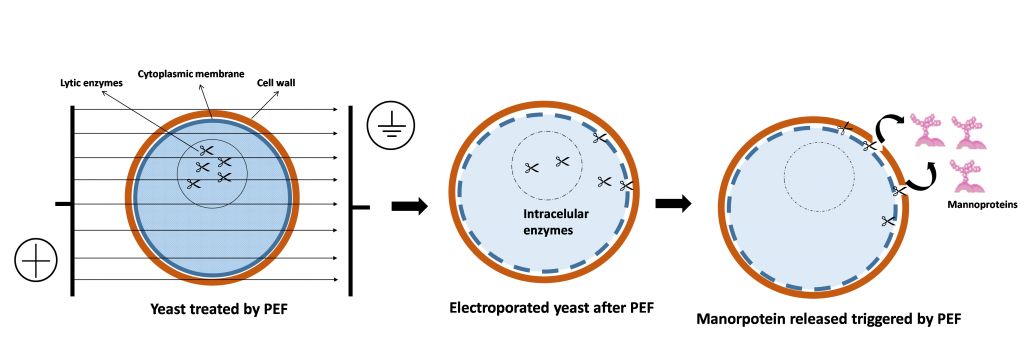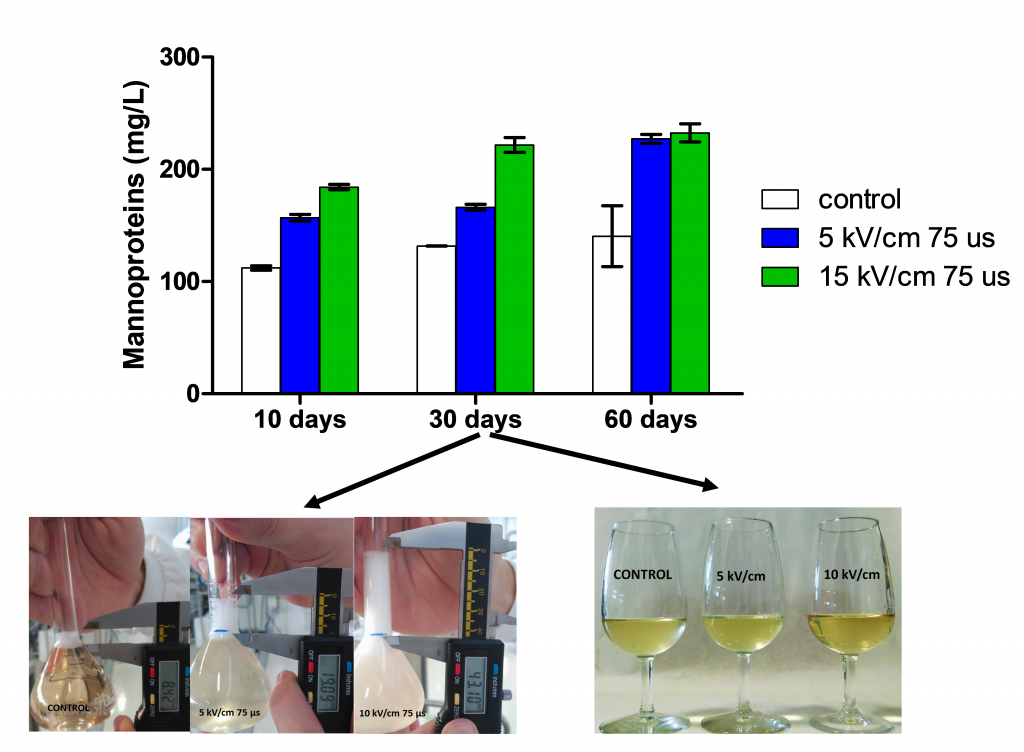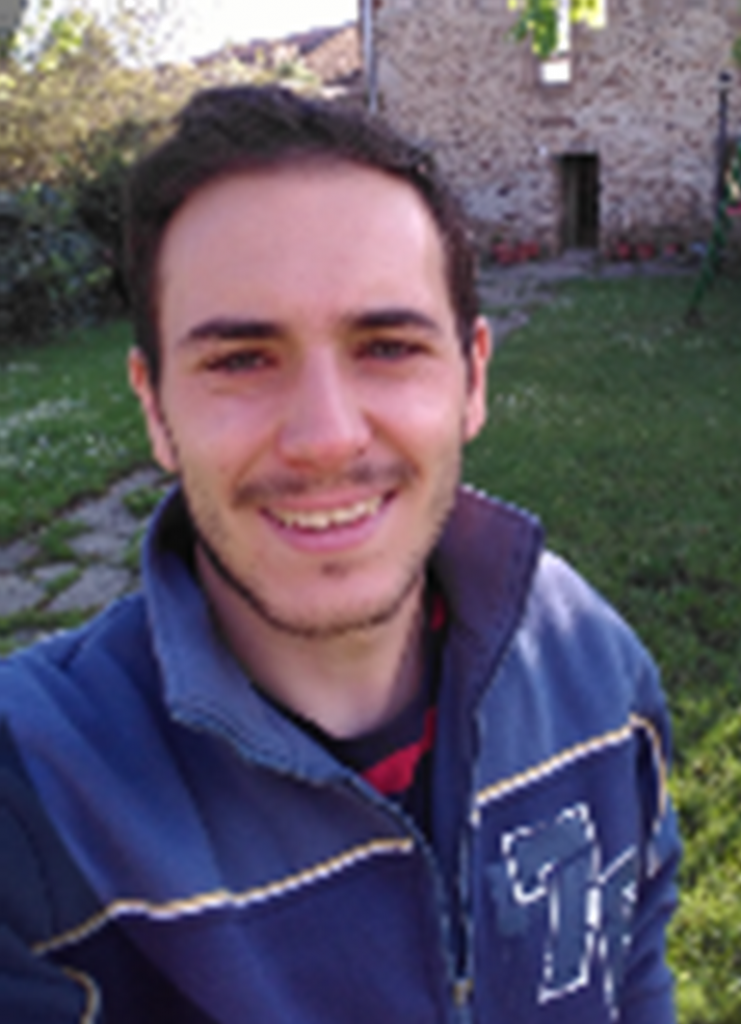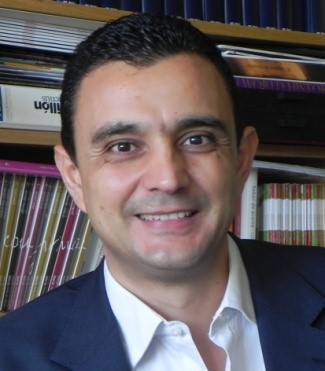By Juan Manuel Martínez and Javier Raso
Mannoproteins are highly glycosylated proteins which constitute the major component of the cell wall in yeast. Their presence in wine produces positive effects such as reduction of haze formation, prevention of tartaric salt precipitation, diminution of astringency, and the improvement of mouthfeel, aroma intensity, and color stability (Pérez-Serradilla & De Castro 2008).
Traditionally, the mannoprotein enrichment of certain types of wines occurs during yeast autolysis in the “aging on lees” step. In this practice, the wine is deliberately left in contact with the lees sediment (mainly composed of yeast). Autolysis causes disorganization of membranous systems and thus permits the release of enzymes such as glucanase and proteinase, thereby leading to the degradation of the cell wall and the subsequent release of mannoproteins into the wine. This process, associated with yeast death, is very slow – lasting from a few months to years (Alexandre & Guilloux-Benatier 2006).

Aging on the lees is a technique that requires considerable investment on the part of wineries in equipment (tanks, barrels), entails elevated labor costs (periodic stirring – bâtonnage – and sensorial analyses), and implies immobilization of winery stocks. Furthermore, this practice may negatively affect wine quality increasing the risk of wine oxidation and microbial contamination with bacteria and Brettanomyces. Different strategies have been suggested for the acceleration of yeast autolysis, including enzymes capable of hydrolyzing β-glucans from yeast cell walls, thermolysis, or mechanical methods for large-scale disruption of microbial cells (such as ultrasound, microwaves, and high pressure homogenization) (Martínez et al., 2016).
Pulsed Electric Fields (PEF) is a technology that provokes the increment of the permeability of cytoplasmic membrane of cells (electroporation) via the application of pulses of high electric field strength (kV/cm) and short duration (μs-ms). It has been recently proven that PEF triggers the autolysis of Saccharomyces cerevisiae and accelerates the release of mannoproteins (Martínez et al. 2016). It is thought that the mechanism involved is related with the fact, the electroporation of the cytoplasmic membrane by PEF could facilitate the contact of endogenous lytic enzymes with the yeast cell wall were the mannoproteins are located (Figure 1).
The present study investigated the potential of PEF for triggering autolysis of Saccharomyces cerevisiae and accelerating the release of mannoproteins during aging on the lees of Chardonnay wine.
Release of mannoproteins from untreated (control) and PEF-treated (5 and 10 kV/cm, 75 μs) yeast of Saccharomyces cerevisiae was monitored along the aging-on-lees storage period.

Release of mannoproteins in Chardonnay wine increased drastically in samples containing PEF-treated (5 and 10 kV/cm, 75 μs) yeasts (Figure 2). No mannoprotein release was observed in the first ten days of aging on the lees in wine containing untreated yeast; however, after the same time interval, the concentration of those compounds increased by 40 and 60 % in wines containing yeast treated by PEF at 5 and 10 kV/cm, respectively. After 30 days of incubation, the mannoprotein concentration in wines containing yeast treated under the most intense PEF conditions reached the maximum value. Control cells, on the other hand, required six months to reach that maximum level.
Chromatic characteristics, total polyphenol index, total volatile acidity, pH, ethanol, and CIELAB parameters of the wine were not affected during aging on the lees with PEF-treated yeast. On the other hand, mannoproteins released from yeast treated by PEF decreased wine turbidity and showed foaming properties as mannoproteins released during the traditional “aging on the lees” (Figure 2).
The gentle PEF treatment required to induce autolysis open up the possibility of processing large volumes of lees in continuous flow with low energy consumption using the most economical PEF devices in the market.
Those interested in a longer length report can download the working paper at:
https://www.sciencedirect.com/science/article/pii/S0963996918307348

Juan Manuel Martínez is a PhD student from vew technologies of food processing group at University of Zaragoza (Spain). He studied his Bachelor degree in Veterinary and then he completed a Master in Food Science and Technology Research. Later on he studied a Master in Research and Development Management in Companies. In addition to the University of Zaragoza education, he has performed two trimester internships in the University of Natural Resources and Life Science in Vienna (Austria) and in Umea University in Sweden. All his investigations are focused on the extraction of interest compounds from different microorganisms utilizing Pulsed Electric Field (PEF) technology. He has been involved in the study of autolysis of yeast induced by PEF, the release of mannoproteins and its application to aging on lees step in winemaking. But also he has studied the PEF-assisted extraction of high-valuable compounds from different microorganism such as yeast and microalgae. Co-author of 10 scientific papers, a book chapter and 13 congress communications.

Javier Raso received his PhD in 1995 at the University of Zaragoza (Spain) where he is currently professor of Food Technology and former Director of the Pilot Plant of Food Science and Technology. He has been visiting researcher of the Microbiology Department at Unilever Research in Bedford (UK), of the Department of Food Biotechnology and Food Process Engineering at Technical University of Berlin (Germany) and of the Biological Systems Engineering Department at Washington State University (USA). His areas of research are in the field of food preservation and processing by thermal and non-thermal technologies such as ultrasound, high hydrostatic pressure, pulsed electric fields and combined processing. Research interest is focused in critical factors affecting efficacy of technologies, kinetics and mathematical modeling, process optimization and mechanisms of action. He has been involved in a number of EU and national funded projects in these topics and he is the author of more than 120 peer-review papers. He is co-author of the book “Pulsed Electric Fields Technology for the Food Industry” and he is serving in the editorial board of the “Innovative Food Science and Emerging Technologies” journal. He was Vice-Chair of the COST Action TD1104 “European network for development of electroporation-based technologies and treatments (EP4Bio2Med) and coordinator of the project FieldFOOD of the Horizon2020 Framework Program of the European Union
References:
- Pérez-Serradilla, J. A., & De Castro, M. L. (2008). Role of lees in wine production: areview. Food Chemistry, 111(2), 447–456.
- Alexandre, H., & Guilloux-Benatier, M. (2006). Yeast autolysis in sparkling wine-a review. Australian Journal of Grape and Wine Research, 12, 119–127.
- Martínez, J. M., Cebrián, G., Álvarez, I., & Raso, J. (2016). Release of mannoproteins during Saccharomyces cerevisiae autolysis induced by pulsed electric field. Frontiers in Microbiology, 7, 1435.
- Martínez, J. M., Delso, C., Aguilar, D., Cebrián, G., Álvarez, I., & Raso, J. (2017). Factorsinfluencing autolysis of Saccharomyces cerevisiae cells induced by Pulsed Electric Fields. Food Microbiology, 73, 67–72.

